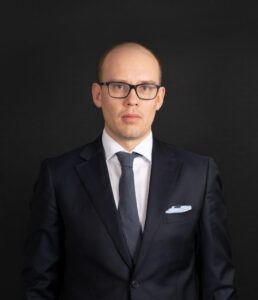Public procurement in Sweden is undergoing significant transformation, driven by a mix of emerging trends and ongoing challenges. Annually accounting for approximately 20 percent of Sweden's GDP and involving contracts valued over SEK 800 billion, public procurement is critical for the functioning of government agencies, regions, municipalities, and certain private companies. Each year, over 17,000 public procurements are announced in Sweden.[1]
Current Landscape and Issues
Despite the high volume of procurements, the processes are often perceived as inefficient and fraught with regulatory shortcomings, leading to a growing number of appeals. In 2023, a record 3,942 appeals were filed, reflecting a 17 percent increase compared to the previous year.[2] This trend underscores significant shortcomings in procurement regulations and highlights the need for continuous improvement and adaptation.
To address these issues, several legal changes have been introduced in recent years, reinforced by assertive interpretations from the Supreme Administrative Court. Reforms include the introduction of exclusion deadlines for new circumstances and an obligation for suppliers to point out issues during the question/answer process in procurement. These measures aim to enhance suppliers' ability to promptly identify deficiencies in procurement documents and evaluate submitted bids accurately.
Impact on Competition
The high demands placed on suppliers, combined with underdeveloped purchasing organizations, have led to a decrease in the number of bids per procurement. This decline has resulted in less competition and higher prices for procuring organizations. To counter this trend, several larger purchasing organizations, including the Swedish Transport Administration, are making systematic efforts to attract foreign suppliers, especially for large and complex infrastructure projects planned in the coming years.
Efforts to attract foreign suppliers include conducting procurements partly in English and harmonizing contract terms with international standards, particularly within the construction sector. Such measures are designed to make the Swedish procurement market more accessible and attractive to international companies, thereby increasing competition and potentially lowering costs.
Review of Exemptions in Real Estate and Construction
The Swedish Competition Authority has focused extensively on investigating and addressing deficiencies in the application of exemptions from procurement obligations, particularly concerning agreements related to the real estate and construction sector. Issues such as the application of the lease exemption (Article 10.a of Directive 2014/24/EU) and the construction commitments in lease agreements have been scrutinized.
In response to potential misuse of these exemptions, the Swedish Competition Authority has applied for procurement fines against large public organizations, including the National Courts Administration. This scrutiny aims to ensure compliance and proper application of procurement regulations, particularly in the construction sector.
Key Trends
The evolving landscape of public procurement in Sweden underscores the necessity for continuous improvement and adaptation. Key trends driving this evolution include:
- Sustainability and ESG: Environmental, social, and governance (ESG) considerations are becoming integral to procurement processes. Public organizations are setting ambitious goals to achieve net zero emissions, making sustainable procurement practices essential.
- Technology and AI: Advanced technologies such as AI are being adopted to enhance transparency, efficiency, and decision-making capabilities. Generative AI, in particular, is seen as a significant leap forward in managing procurement processes and compliance.
- Legal and Regulatory Changes: New regulations and stricter interpretations by courts are pushing suppliers to improve their processes and compliance, aiming to reduce the number of procurement-related appeals.
- Foreign Supplier Engagement: Efforts to attract foreign suppliers through language inclusivity and international standardization are aimed at increasing competition and improving procurement outcomes.
Decrease in Number of Bidders
The number of bids per public procurement continues to decrease in Sweden, leading to reduced competition, higher bid prices, and ultimately poorer outcomes for public entities. In 2022, an average of 4.4 bids were submitted per procurement, compared to 5.5 the previous year. Particularly concerning is that in one out of every five procurements, only one bid is submitted.[3]
Larger public procurers are taking significant measures to both increase the attractiveness of the contracts being procured and to enhance the interest of foreign entities in submitting bids in Sweden. This includes organizing tender meetings, conducting more procurements partially in English, and harmonizing contract terms to some extent with international standards.[4]
Increasing Number of Appeals
The number of appeals is rising to new record levels – in 2023, a total of 3,942 appeals were made. This is despite the increased requirements placed on suppliers to independently identify and point out deficiencies in the procurement documents and the procuring organization's evaluation of submitted bids.
In 2023, the administrative courts decided on 2,878 cases of procurement appeals. In just over 9 percent of the cases, the applicant for the appeal was granted the appeal in whole or in part. In about 57 percent of the cases, the court conducted a substantive review but rejected the appeal. 35 percent of the cases were decided in the administrative courts without a substantive review. In the 775 appeal cases decided in the administrative courts of appeal in 2023, the administrative court's judgment or decision was completely or partially changed in about 25 percent of the cases.[5]
Major Infrastructure Investments in the Near Future
Sweden is poised for substantial infrastructure investments in the near term. The Swedish Transport Administration plans to conduct over 800 procurements for maintenance and new construction projects over the next six years. This effort is part of a broader initiative to address the country's significant maintenance backlog and to expand its infrastructure to meet future needs.[6]
In addition to the Swedish Transport Administration’s projects, other public entities such as Svenska Kraftnät and Region Stockholm are also gearing up for extensive infrastructure expansions. Svenska Kraftnät, responsible for the national grid, is planning major upgrades to ensure reliable and sustainable energy distribution. Similarly, Region Stockholm is initiating projects to enhance the region’s transportation network, including expansions to metro and commuter rail services.
These initiatives are critical as Sweden works to modernize its infrastructure, improve connectivity, and support sustainable development goals. The investments are expected to enhance economic growth, create jobs, and improve the quality of life for Swedish citizens.
Focus on Sustainability, ESG, Technology, and AI
Environmental, social, and governance (ESG) considerations are becoming integral to procurement processes. Many public organizations are setting ambitious goals to achieve net zero emissions, making sustainable procurement practices not just desirable but essential. This affects the design of virtually all ongoing and upcoming procurements and places higher demands on suppliers to meet these high standards.
Alongside sustainability and ESG, we are broadly seeing an adoption of advanced technologies such as artificial intelligence (AI) by both public procurers and their suppliers. These technologies are enhancing transparency, efficiency, and decision-making capabilities. Generative AI, in particular, is viewed as a significant leap forward, helping private actors scrutinize public entities by gaining actionable insights – something anticipated to lead to more challenges and appeals against unauthorized direct procurements in the coming years.
Authors



Jesper Linder
Footnotes
[1] https://www.upphandlingsmyndigheten.se/statistik/
[2] https://www.upphandlingsmyndigheten.se/statistik/rattsfallsstatistik/antalet-overprovningsmal-okar-2023/#kammarratterna_andrade_utgangen_i_25_procent_av_malen
[3] https://www.upphandlingsmyndigheten.se/nyheter/2023/farre-anbud-i-offentliga-upphandlingar/
[4] Trafikverkets arbete med strategiska offentliga inköp, June 2020.
[5] https://www.upphandlingsmyndigheten.se/statistik/rattsfallsstatistik/antalet-overprovningsmal-okar-2023/#kammarratterna_andrade_utgangen_i_25_procent_av_malen
[6] Trafikverkets Inköpstidplan, updated on May 1, 2024.